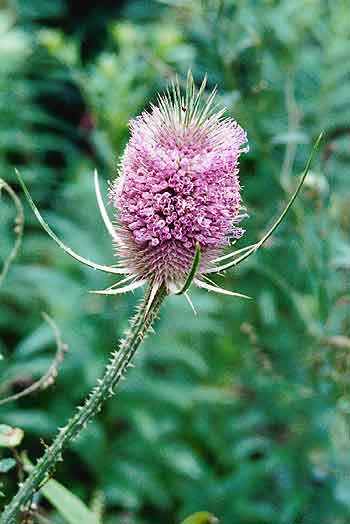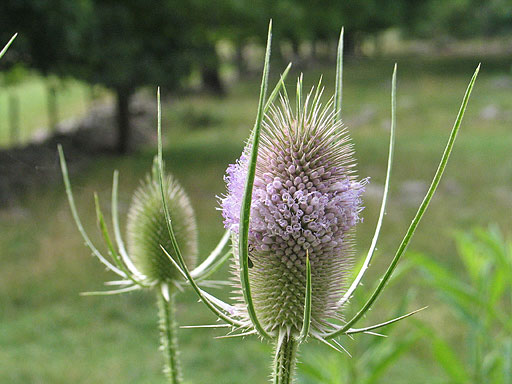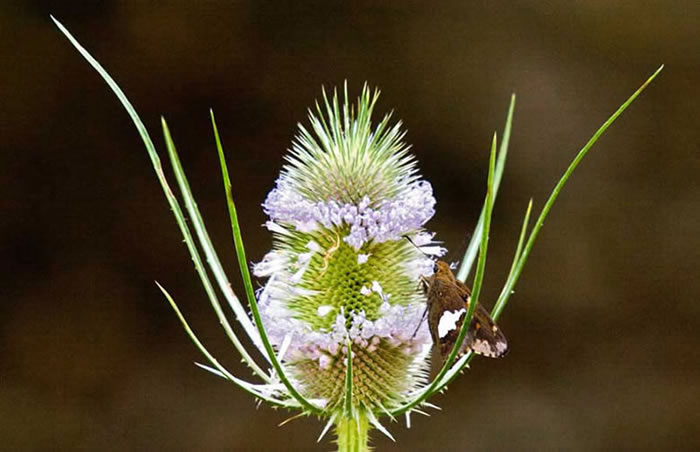During the rosette stage leaves vary from somewhat ovoid in young plants to large and oblong leaves that are quite hairy in older rosettes. During the rosette phase teasel develops a large tap root. The tap root may be over 2 feet (0.6 meter) in length and 1 inch (2.5 cm) in diameter at the crown.
Cut-leaved teasel blooms from July through September, and common teasel blooms from June through October. Flowering plants have large, oblong, opposite, sessile leaves that form cups (the cups may hold water) and are prickly, especially on the lower midrib. Stems also are prickly. Teasel's unique inflorescence makes the plant readily identifiable when blooming. Flowers are small and packed into dense oval-shaped heads. The heads (inflorescences) are subtended by upcurved bracts and are located terminally on the flowering stems. Cut-leaved teasel usually has white flowers, while common teasel usually has purple flowers. Flowering stems may reach 6-7 feet (1.8-2.1 meters) in height.
Cut-leaved and common teasel should be accurately identified before attempting any control measures. If identification of the species is in doubt, the plant's identity should be confirmed by a knowledgeable individual and/or by consulting appropriate books.

Distribution
Teasel is endemic to Europe. It was introduced to North America possibly as early as the 1700's. Another species, Dipsacus fullonum, was introduced for use in raising the nap of cloth. Possibly, cut-leaved and common teasel were introduced with D. fullonum or introduced accidentally with other plant material from Europe. Teasel has spread rapidly in the last 20-30 years. This rapid range expansion probably was aided by construction of the interstate highway system. Teasel has colonized many areas along interstates. Common teasel sometimes is used as a horticultural plant, which has aided in expansion of its North American range. In particular, the use of teasel in flower arrangements has aided its dispersal, especially to cemeteries. Teasel ocurs widely in northern and central Illinois.
 Fuller's Teasel
Fuller's Teasel